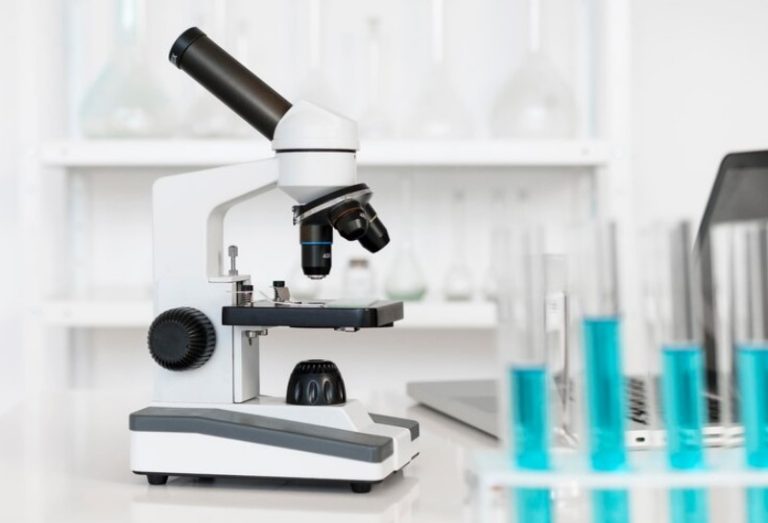Microscopes are among the best inventions that led to the discovery of numerous microscopic organisms, like cell organelles, viruses, bacteria, etc. We are living in an era where a person can even see objects as small as an atom that is only one ten-millionth of a millimeter. People use microscopes ranging from as low as 40x magnification to as high as even 1000x.
Let’s continue reading the article for more insights into a microscope with its maximum magnification.
What is a Microscope?
These are specially designed equipment to visualize objects that are impossible to be seen with the naked eye. In other words, microscopes are essential for examining microscopic objects, such as cells and bacteria, and understanding their structure and function. One of the vital features of a microscope is its magnification, which determines how much larger an object appears compared to its actual size. Microscopes have different magnification levels, ranging from low to high. This article will help you understand a microscope’s low and high magnification.
Low Magnification
Low magnification on a microscope typically ranges from 40x to 100x. At this level, the microscope is suitable for viewing larger specimens, such as whole insects or plant structures. Low magnification is often used in educational settings, such as in high school or undergraduate biology classes. It is also helpful for fieldwork, where a portable microscope is needed to examine samples in their natural environment.
High Magnification
High magnification on a microscope can range from 400x to 1000x or above. At this level, the microscope is suitable for viewing smaller specimens, such as individual cells or microorganisms. High magnification is often used in research settings, such as medical or biological research labs, to study the structure and behavior of microscopic organisms.
How to Determine Magnification of a Microscope?
The magnification of a microscope is determined by the combination of lenses in the objective and eyepiece. The objective lens is closest to the specimen and provides most of the magnification, while the eyepiece lens further magnifies the image projected by the objective lens. These present the individual magnifications; however, total magnification is easily calculated by multiplying the objective lens’s magnification by the eyepiece lens’s magnification.

Importance of High Magnification of a Microscope
High magnification of a microscope alone cannot help you obtain a clear and enlarged image, but other factors are also involved. However, it holds great significance because of providing a more precise and detailed view of microscopic elements. Scientific students or researchers find this feature pretty useful when observing tiny structures that are otherwise impossible to be seen with the naked eye. For example, student microscopes with higher magnification help the students follow small details of living cells, tissues, or microorganisms. Other elements that contribute to providing a detailed view besides high magnification are resolution, the field of view, contrasts, etc.
Resolution of a Microscope
The term resolution in microscopy refers to its ability to distinguish the specimen’s details. You can also explain resolution as the minimum distance of two points in a sample, easily observed under a microscope. In addition to magnification, microscopes also have different levels of resolution, which determines the level of detail that can be seen in the specimen. Higher-resolution microscopes can reveal finer details in the specimen, such as the structure of individual organelles within a cell. However, higher-resolution microscopes require greater skill and precision in preparing and handling specimens.
Bottom Line
In conclusion, low and high magnification on a microscope refers to the range of magnification levels that a microscope can provide. Low magnification is suitable for viewing larger specimens, while high magnification is necessary for studying microscopic organisms and cells. Understanding the appropriate magnification and resolution levels for a particular specimen is crucial for achieving accurate and valuable results in microscopy.



